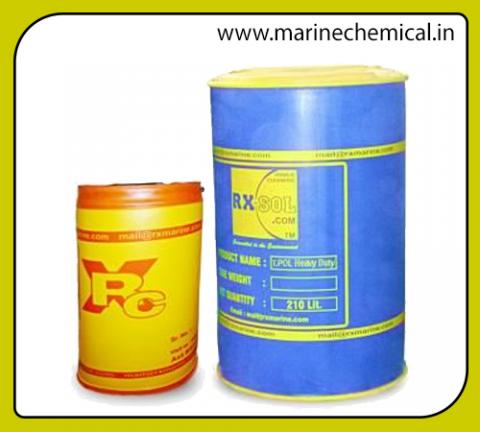
Bentonite Powder
Bentonite Supplier for Oil Field Industries. It is a drilling-grade Bentonite which is naturally occurring clay. It is a High Yield Natural Sodium montmorillonite. It meets API 13A Standards. Bentonite, is a very fine grind material mostly a composite of clay minerals, especially montmorillonite which chemically describes as hydrous alumina-silicate and contains small amounts of alkali and alkali-earth metals.
• It is Viscosifier and Filtration control agent for water based Mud Systems.
• It is used in drilling muds for controlling bore hole stability. It is utilized in drilling muds to extract drill cuttings from the bit.
• It is also used for clearing cat litter
Bentonite, sometimes refer as sometimes referred to as Montmorrilonite is a naturally occurring substance, composed of a number of layers, each approximately 10 angstroms thick, and each consisting of two tetrahedral and one octahedral unit. This structure is responsible for three important characteristics, the ability to absorb large amounts of moisture, the ability to exchange ions and thixotropic gel formation.
Difference Between Sodium Bentonite and Calcium Bentonite :
Bentonite is naturally occurring hydrated Alumina Silicate, there are two main varieties, calcium and sodium, where sodium Bentonite is the more commercially important. Calcium Bentonite deposits are much more common than sodium Bentonite deposits. However, calcium Bentonite can be changed to sodium Bentonite by the ion exchange process. The swelling type or sodium Bentonite, which has single water layer particles containing Na+ as the exchangeable ion. The other has double water layer particles with Ca++ as the exchangeable ion. It is called calcium Bentonite or non-swelling type.The clay-water characteristics are of primary importance. The chemical composition of the Bentonite is a consideration only because changes in physical properties accompany changes in chemical composition. Sodium Bentonite swells or expands to a greater degree than its calcium equivalent. Small percentage of cation exchange sites are occupied by another ion, such as calcium, a state is developed in the clay which promotes both optimum swelling and fastest hydration. Sodium Bentonite has higher swelling capacity, this property develops higher viscosity in suspensions, greater state of disaggregation, formation of smaller clay particles or greater colloidal properties.
| Composition of Bentonite |
Percentage value |
| Part Number |
RXSOL-81-8101-050 |
| SiO2 | 70,A2% |
| Ai2O3 | 15.9,A1.5% |
| Fe2O3 | 2.3,A0.1% |
| FeO | 0.95,A0.1% |
| CaO | 0.96, A0.1% |
| MgO | 1.91, A0.1% |
| NaO | 1.80, A0.1% |
| TiO2 | 0.04, A0.01% |
| K2O | 0.78, A0.01% |
| Caustic Soda | 0.55, A0.1% |
Various grade of Bentonite :::
Drilling Grade 1
API 13A Section – 9 Grade Bentonite Powder:
Physical Analysis:
|
PROPERTIES |
PROTOCOL |
UNIT |
REQUIRED |
RESULT |
|
Viscometer Dial Reading at 600 rpm |
API Spec. 13A:2004/ ISO 13500: 1998 |
r/min |
30 |
36 |
|
Yield Point / Plastic Viscosity Ratio |
API Spec. 13A:2004/ ISO 13500: 1998 |
_ |
3 Max |
2.5 |
|
Filterate Volume |
API Spec. 13A:2004/ ISO 13500: 1998 |
ML |
15 Max |
14.6 |
|
Moisture Content |
API Spec. 13A:2004/ ISO 13500: 1998 |
% by weight |
10.0 max. |
10 |
|
Dry Screen Analysis(Residue Greater than 75 Microns)% |
API Spec. 13A:2004/ ISO 13500: 1998 |
% by weight |
4.0 max. |
3.0 - 4.0 |
IOP Grade Bentonite lumps :
|
Properties |
Protocol |
Unit |
REQUIRED |
|
Moisture Content |
API Spec. 13A:2004/ ISO 13500: 1998 |
% by wt. |
12% to 40 % max. |
|
LOI |
IS:2000(P-1)-1985 |
% by wt. |
5 – 10. |
|
Free Swelling Volume 2gm/100ml |
ASTM D 5890:1995 |
ml |
32 min. |
|
PH Value of 5% gel |
IS:6186-1986 |
pH |
8.0 – 10.0 |
|
Plate Water Absorption (16 hours) |
ASTM E 946 |
% |
720- 760 |
|
Gel Time 2.5gm/25 ml |
IS:12446-1988 |
second |
Instant |
|
Methylene Blue Value |
API spe 131:2004/ ISO 10416:2002 |
mg/gm of clay |
350 - 400 |
|
Lumps size |
IS:6186-1986 |
% |
10 to 40 m.m. |
Chemical specification:
Alumina as AL2O3%>15.0-19.0
Calcium as Cao%1.5-2.0
Mgo 2.5-3.5
